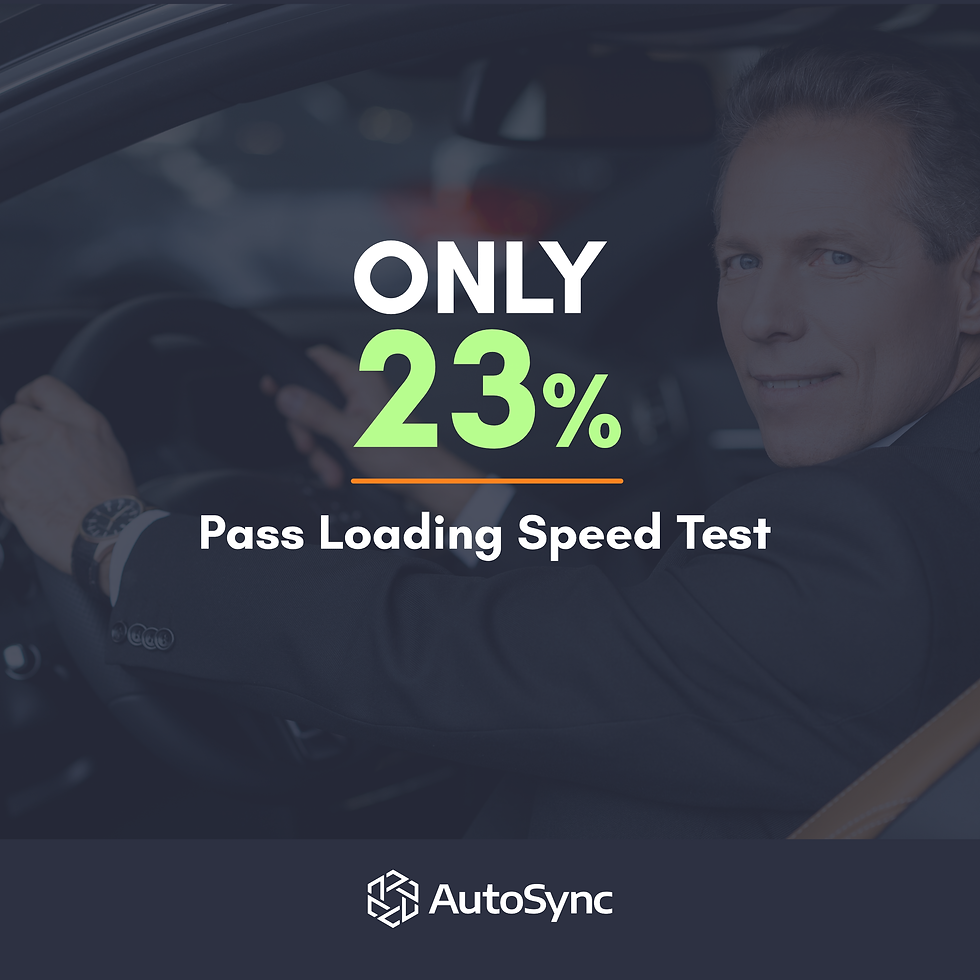Every Second Matters: The Importance of a Speedy Website
- Josh Mishra
- Aug 13
- 2 min read
Updated: Aug 16
In today’s digital world, your dealership’s website is often the first and sometimes only interaction a potential customer has with your brand. The harsh reality is, for every second your website takes to load, you are losing a large portion of your potential customer base.

Over 95% of Automotive Websites Don’t Meet Google’s Performance Standards1 .
A recent industry analysis from SHIFT Digital reveals a frightening fact: over 95% of
automotive websites fail to meet Google’s recommended performance standards. That means most dealership websites are slow, clunky, and frustrating for users, which inevitably leads to poor Google rankings and lower quality traffic.
With Google using site speed as a primary ranking factor, meaning that besides having a higher bounce rate than the average site, a slow site can result in your dealership’s site landing on the 2nd page on Google, even with good SEO.
Short Attention Spans Leave No Room for Slow Websites
Let’s face it, attention spans are shrinking, and regardless of whether people are browsing for their next car or swiping through social media, people expect instant results. If your website takes more than a few seconds to load, most users will simply move on, likely gravitating to a competitor’s faster, more intuitive site.
Consider these stats:
53% of mobile users1 abandon a website that takes longer than 3 seconds to load.
Even a 1-second delay in page load time can reduce conversions by up to 20%.
For dealerships, a slow site doesn’t just mean frustrated users; it means fewer leads, fewer showroom visits, and ultimately, lost revenue.
Simple Ways to Improve Your Dealership Website Speed
Not all hope is lost; there are easy, incremental steps you can take to boost your site’s performance and keep customers engaged:

1. Optimize Your Images
Large, uncompressed images are one of the biggest culprits behind slow websites. Use modern image formats such as ‘.webp’ and compress images to reduce load times without sacrificing quality.

2. Limit Web Add-ons
Too many third-party scripts, such as tracking codes, excess widgets, or unnecessary plugins, can drag down your site’s speed. Trimming any loose fat is crucial in making sure your website is efficient.

3. Keep Bulky Content off the First Fold of Your Site
The first fold represents the first screen of content that your website shows without the user scrolling at all. By instantly loading up a large banner, or long video as soon as a customer clicks on your site, you are putting more strain on your website and could possibly slow down your customer’s experience. By removing these from your site, or having them load after the rest of the website, below the first fold, you can significantly improve load times.
4. Prioritize Mobile Performance
The majority of dealership website traffic comes from mobile devices. Make sure your site is fully responsive, mobile-optimized, and passes Google’s Core Web Vitals for mobile. You can learn more about mobile performance here.
In Summary
In an era where speed and opportunity go hand-in-hand, dealerships simply can’t afford to have a slow website. Improving your website’s performance not only enhances the user experience but also boosts your visibility on search engines and converts more online visitors into paying customers.



Comments